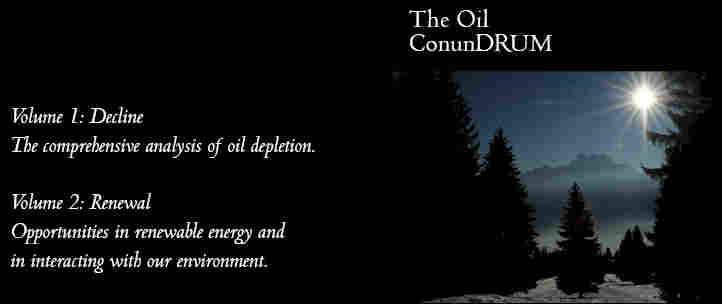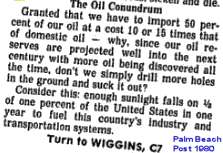Si Senor
From the previous post, a Deutsch Bank Research report referenced the potential of (apparently) using raw silicon as an energy storage mechanism. From the context, the authors clearly did not intend that the silicon be used in any conventional sense, ala photovoltaic energy production.
In fact after reading through the online report entitled "Silicon as an intermediary between renewable energy and hydrogen", by chemistry Prof. Dr. Norbert Auner Institute of Johann Wolfgang Goethe-University, you get the impression that the author has not proposed anything truly revolutionary. Essentially, his idea postulates the notion that pure silicon is highly reactive under certain conditions. We can meet these conditions if the silicon is amorphously particulated. This is a big duh to most semiconductor engineers. Pure crystalline silicon is covalently bonded and will form only an almost instantaneous surface oxide layer upon exposure to air. After that, much like aluminum, the tough oxide layer prevents any further reactivity.
 The key is to keep the silicon amorphous with lots of surface area; this will break many of the covalent bonds and allow the dangling surface bonds to react with the outside world. Voila, you get reactivity as shown to the right. In principle, not much different than using magnesium in a flashbulb to generate an uncontrolled reaction with oxygen in the air.
The key is to keep the silicon amorphous with lots of surface area; this will break many of the covalent bonds and allow the dangling surface bonds to react with the outside world. Voila, you get reactivity as shown to the right. In principle, not much different than using magnesium in a flashbulb to generate an uncontrolled reaction with oxygen in the air.
So this is basically logical reasoning. The author figures that much of the earth is sand, and if we can use the vast solar energy in sandy, desert areas, we should be able to store much of the energy in silicon. The main thrust of future research would involve converting the silicon dioxide ("sand") into the raw elemental amorphous powdered form.
The energy content of the silicon is 9 kWh/kg. Gasoline is 12.7 kWh/kg. Not bad, but we still have to get there (industrialized process, what to do with waste SiO2, etc).
Sand, sand everywhere, but not a grain to energize. From Hollywood, we see that the remake of The Flight of the Phoenix desert saga is now in theaters; maybe in another 40 years, when the 2nd remake comes along, we'll get a new plot-line.









0 Comments:
Post a Comment
<< Home